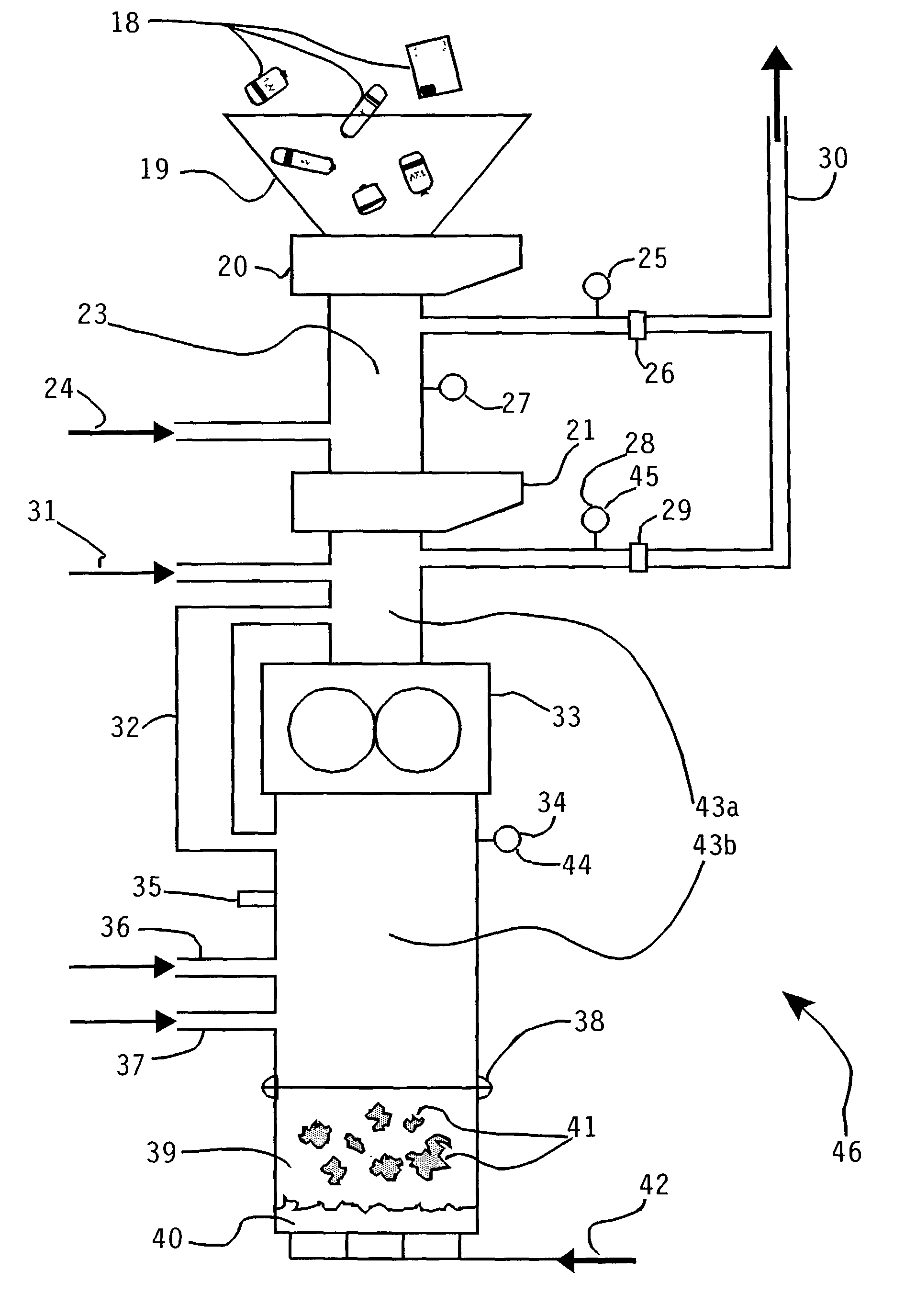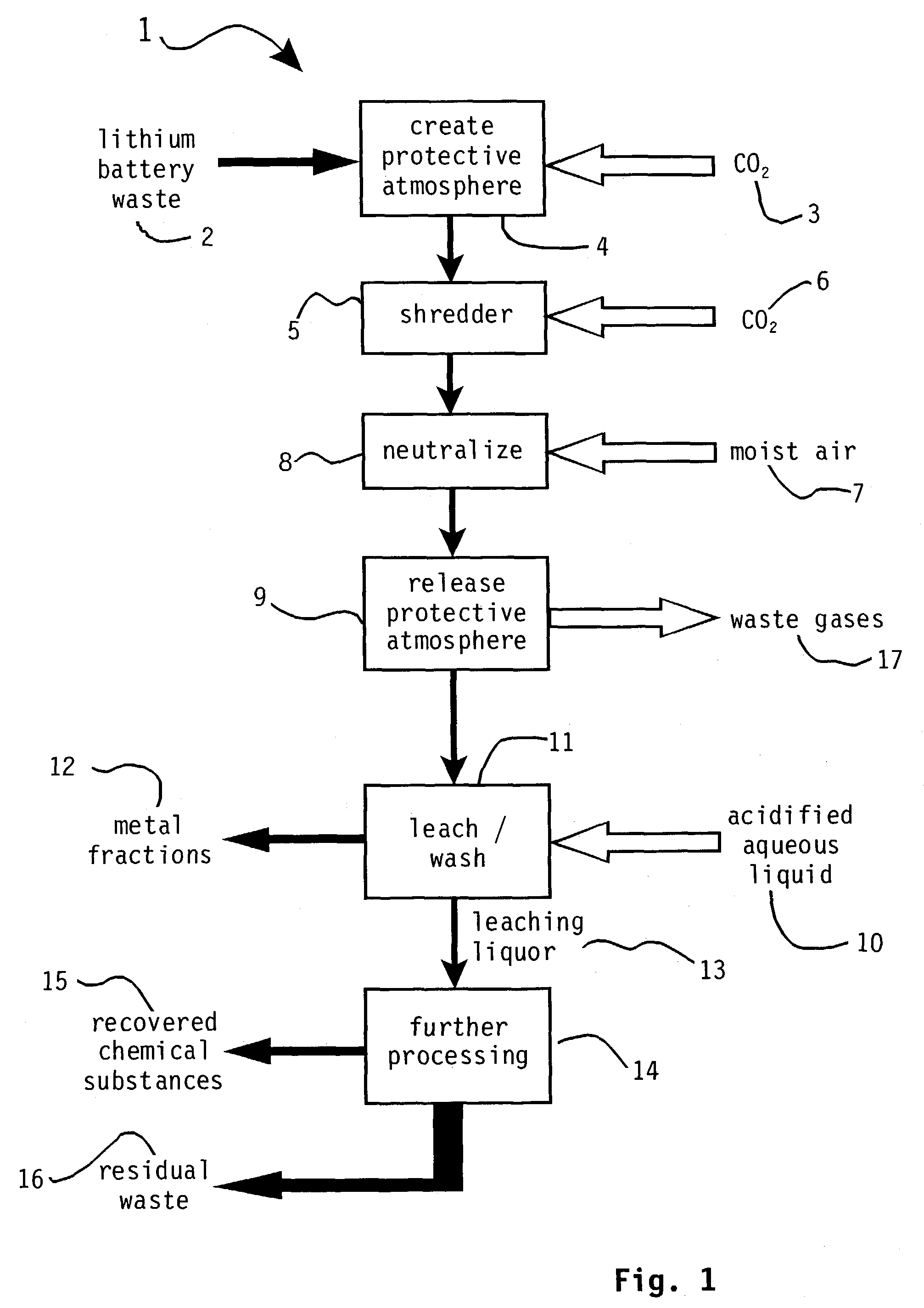Method of and apparatus for dismantling and storage of objects comprising alkali metals, such as alkali metal containing batteries
a technology of alkali metals and batteries, which is applied in the field of alkali metals or alkali metal compounds, can solve the problems of high energy consumption, high energy consumption, and high energy consumption of alkali metals, and achieve the effect of cost-effectiveness
- Summary
- Abstract
- Description
- Claims
- Application Information
AI Technical Summary
Benefits of technology
Problems solved by technology
Method used
Image
Examples
Embodiment Construction
[0045]FIG. 1 illustrates in a flow chart type manner a method according to an embodiment of the invention, generally designated by reference numeral 1.
[0046]In a first step, lithium battery waste 2 is received in a protective environment or atmosphere 4 formed by carbon dioxide gas (CO2) 3.
[0047]In a second step, the waste material 2 is dismantled under the gaseous carbon dioxide protective atmosphere 4 using a mechanical processing technique such as shredding 5, while the carbon dioxide gas 6 is constantly refreshed.
[0048]The carbon dioxide atmosphere 4 enables shredding of the battery waste 2 without strong exothermic reactions. The lithium metal seems to react more readily with the carbon dioxide, building a passive surface layer, than to react vigorously with the cathode material present in the cells or batteries. This although lithium metal surfaces and cathode material in the battery scrap are rubbed through and against each other intensively in the shredder 5.
[0049]Instead of...
PUM
| Property | Measurement | Unit |
|---|---|---|
| Deformation enthalpy | aaaaa | aaaaa |
| Residual entropy | aaaaa | aaaaa |
Abstract
Description
Claims
Application Information
 Login to View More
Login to View More - R&D
- Intellectual Property
- Life Sciences
- Materials
- Tech Scout
- Unparalleled Data Quality
- Higher Quality Content
- 60% Fewer Hallucinations
Browse by: Latest US Patents, China's latest patents, Technical Efficacy Thesaurus, Application Domain, Technology Topic, Popular Technical Reports.
© 2025 PatSnap. All rights reserved.Legal|Privacy policy|Modern Slavery Act Transparency Statement|Sitemap|About US| Contact US: help@patsnap.com



